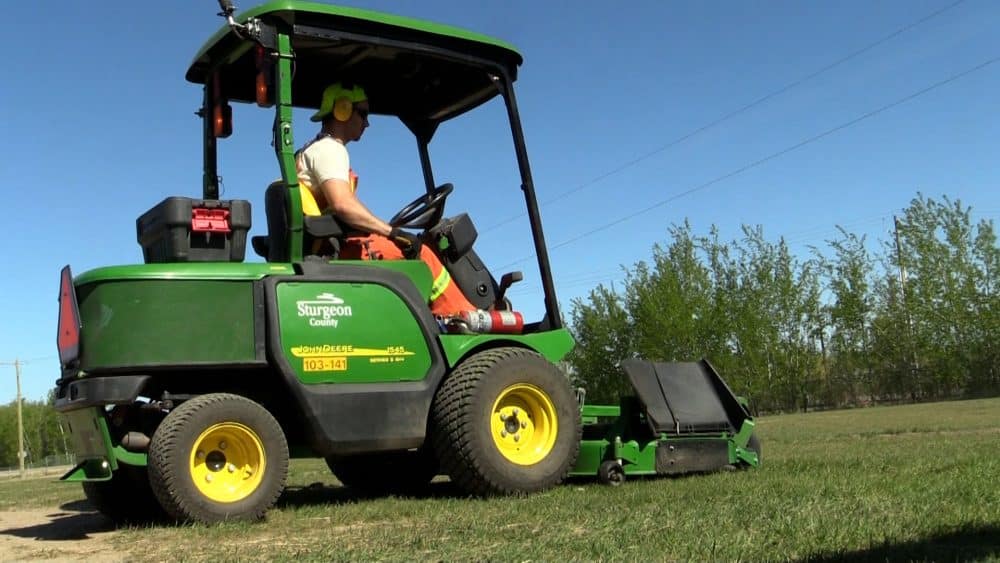Vegetation management is about keeping on top of any unwanted weeds, branches, or other greenery that can get in the way of infrastructure or take over the vegetation you want. Sturgeon County cares about vegetation management for many reasons, including limiting the spread of noxious and prohibited noxious weeds efficiently and responsibly, and ensuring we comply with the Alberta Weed Control Act.
Sturgeon County has also created standards when it comes to vegetation management on lands that belong to us, as well as a Community Standards Bylaw for residents to follow to keep our communities looking nice and staying safe.
You might be asking: how can mowing the grass keep me safe? By preventing vegetation from accumulating, we:
- improve or maintain traffic sightlines
- reduces the risk of wildfire near you
- preserves better road surfaces, allowing the water to drain properly, and keeping the ditches clear to push the snow into
- prevent the spread of regulated weeds, which can be toxic to humans or livestock, or negatively impact ecosystems
Integrated Pest Management Practices
County-run vegetation management involves integrated pest management (IPM). Our IPM programming includes roadside programs to address weed control, grass mowing, re-vegetation (seeding construction projects) and brush control through herbicide, manual, mechanical, cultural, and even biological control methods.
The most effective and long-term method to controlling any pest is to incorporate integrated pest management (IPM) practices. IPM contains six steps:
- Prevention: prevent the pests from establishing.
- Identification: know what the pest is.
- Monitoring: monitoring populations, environmental conditions, and damage levels.
- Action threshold: when the threshold is reached (where it costs less to control them, than the damage they are causing), then you decide on your management option(s).
- Management options/implementation: based on the pest and current conditions, select a management option. This can be biological, chemical, and cultural/mechanical.
- Evaluation: after implementation, evaluate your results. Return to steps one through three, and consider a different management option if your first choice was ineffective.
